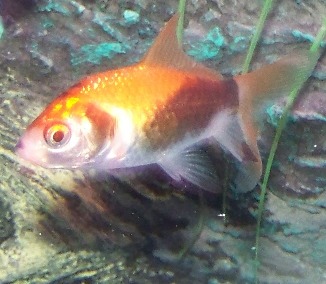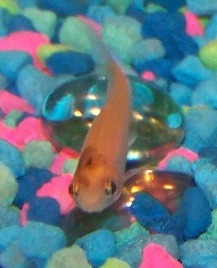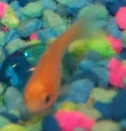The technical term for a common black spot issue with goldfish (and possibly other fish but I haven't read enough about all other fish and this issue) is melanophore migration. You can google those two words to read more about this issue. As somervell said, it's usually a benign condition where the black pigmentation cells migrate to an injured area and has to do with the healing process. It's often associated goldfish subjected to high ammonia levels but I've also seen it show up on the fins of goldfish that had fin rot and as the fins grew back, they got melanophore migration as well.
That said, there is also a parasite that can cause black spot disease.
Scroll down about 1/2 way on this page for some basic info about this disease.
http://www.fish.state.pa.us/images/pages/qa/fish/worms.htm
SNIP - The black spots are caused by pigment that the fish deposits around the larval stage of a parasitic digenetic trematode, usually a
Neascus spp (END SNIP)
As you can see, it's likely the same melanophore migration that forms the black spots around this parasite also...
Here's the rest of the info from the above link.
Black spots
Black spot disease is commonly observed in rock bass and other sunfish, bass, pike, perch, minnows, and other fish species. It can be identified by the presence of small black spots, usually about the size of a pin head, in the skin, the fins, the musculature, and the mouth of the fish. The black spots are caused by pigment that the fish deposits around the larval stage of a parasitic digenetic trematode, usually a
Neascus spp.
The lifecycle of the "black spot" parasite is complex. The adult parasite is found in a fish eating bird, the kingfisher. The larval parasite is transferred from the infected fish to the bird during the feeding process. In the kingfisher, the larval stage develops into an adult parasite. The adult parasite in the intestine of the bird produces eggs that are eventually deposited in the water. There the eggs mature, hatch, and develop into the miracidium stage of the parasite. The miracidium infects a snail. In the snail, the miracidium develops into the cercaria life stage. The cercaria leaves the snail and actively penetrates a host fish. In the fish, the parasite becomes encysted. In about 22 days, black spots form around the cyst. This entire lifecycle takes at least 112 days to complete.
In general, the presence of the "black spot" parasite does not affect the growth or the longevity of the infected fish; however massive infections in young fish may cause fish mortality. The parasite is incapable of infecting humans and, as is the case with all fish parasites, it is destroyed by thorough cooking. When fish are heavily infected, some anglers prefer to remove the skin to improve the appearance of the cooked fish.
(END SNIP)
The Skeptical Aquarist has a good article about trematodes. They seem to be benign while in the encysted phase which is why your fish don't seem to be showing any kind of problems. Just keep an eye on them and read the articles.
http://www.skepticalaquarist.com/docs/health/trematodes.shtml

















